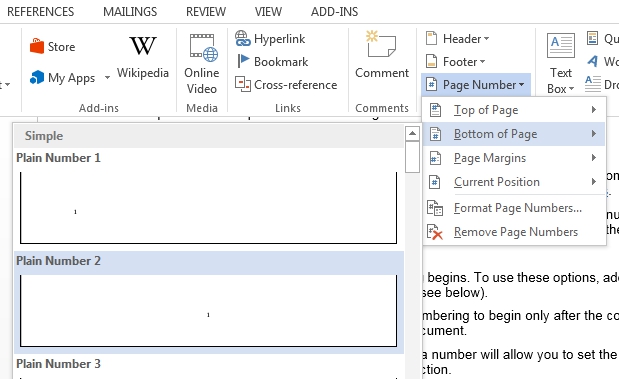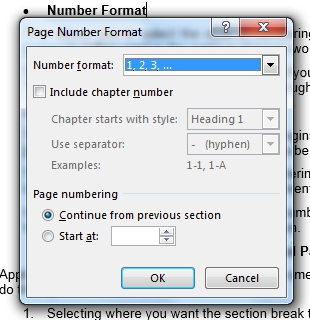-
3-minute read
-
21st July 2016
Adding Page Numbers in Microsoft Word
Compared to some of the fancier options in Microsoft Word, the ability to add page numbers might seem a little mundane. Yet this simple aspect of formatting is essential for everything from CVs to PhD theses, ensuring that the pages of your document remain in the correct order and helping the reader to navigate your work.
There are also a few additional functions related to page numbers in Microsoft Word, which we’ll get into once we’ve covered the basics. Speaking of which…
Page Numbers: The Basics
Adding basic page numbers to a document is so simple that you could probably train a moderately smart dog to do it. Generally, however, it is easier to:
- Find the ‘Insert’ tab and click ‘Page Number’ under the ‘Head & Footer’ section
- Select where you want your page numbers to appear (header, footer or margins)
- Select the alignment required (left, right or centre)

And voila! Your page numbers should then appear in the position selected throughout your document. This frees up more time for training your dog to use HTML5 instead.
Page Numbers: Formatting
You can customise the page numbers in your document by clicking ‘Format Page Numbers…’ in the ‘Page Number’ dropdown menu. The two main options here are:
- Number Format
This controls the style of the page numbers in your document. Arabic numerals are the default setting, but you can also use lettering or Roman numerals.
To add chapter numbers to your page numbering in a longer document, such as a dissertation, select ‘Include Chapter Number’ in this window. This, however, requires applying ‘Heading’ styles in your document first.
Find this useful?
Subscribe to our newsletter and get writing tips from our editors straight to your inbox.
Subscribe to Beyond the Margins and get your monthly fix of editorial strategy, workflow tips, and real-world examples from content leaders.
- Page Numbering
This sets the number at which your page numbering starts, defaulting to ‘1’ on the first page of your document. This function can be useful when your document is divided into distinct sections (see below).
Page Numbers: Section Breaks
If you add a section break to your document, Microsoft Word allows you to apply different numbering styles to different parts of your work (or reset the numbering for a new section).
A common example of this is using Roman numerals for the pages up to the introduction in a book or thesis, then Arabic numerals for the main body of your work.
To use this function, all you have to do is:
- Go to ‘Insert’ and select either ‘Header’ or ‘Footer’ under the ‘Header & Footer’ section
- Select the header/footer after the break where you want to apply a new numbering style
- In the ‘Design’ tab, deselect ‘Link to Previous’

- Go to ‘Format Page Numbers…’ and apply the options required for the new section
- Choose ‘Continue from previous section’ to maintain continuity or set the page number at which you want the next section to begin
As long as ‘Link to Previous’ is deselected, any changes you make to the page numbering will not affect previous sections of the same document.




